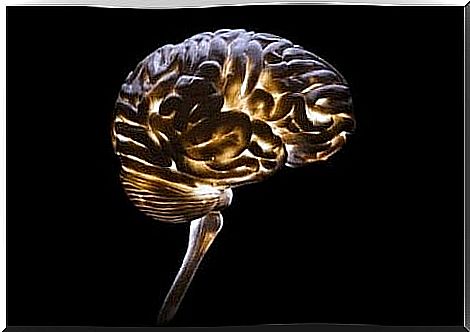Neurocriminology, The Understanding Of Crime

Primitive, savages and even biologically submissive. Such was the understanding of criminals in the 19th century, and this is how Cesare Lombroso described these people. In addition, this controversial Italian doctor and criminologist suggested that people who were prone to criminal behavior shared certain physical characteristics. Yet this does not necessarily mean that the field of neurocriminology stems from his ideas.
Adrian Raine, professor of criminology and psychiatry at Richard Perry University, seems to disagree. He even supported Dr. Lombroso in his famous book The Anatomy of Violence. In fact, Raine suggests that if we remove Lombroso’s variables of underlying racism and outdated ideas about phrenology, we should thank this founder of positivist criminology for the idea that criminal behavior has biological roots.
Criminal behavior and violence are increasingly seen as the most important public health problems around the world. In fact, we are facing a biopsychosocial phenomenon. We obviously cannot rule out these psychological and social factors. However, there is another aspect that requires further investigation. The neurological.

What is neurocriminology? The understanding of crime
When you think of crime, you probably think of characters like Ted Bundy, John Wayne Gacy (Pogo the Clown) or Jeffrey Dahmer (Milwaukee Butcher). The truth is, however, that criminal and violent behavior happens every second around the world in several ways. However, not all abuses, thefts or psychopathic behaviors appear in the media or are the subject of Netflix TV series.
Violence has and will always be one of the problems with the greatest impact on society. This is where science is at the center. Neurocriminology is a discipline that uses a variety of methods and techniques aimed at understanding, predicting, treating, and even preventing violence and crime.
However, there are certain ethical-legal issues implicit in this field. As Dr. Adrian Raine points out, there may be a point in the future when all men aged 18 and older will have a brain scan and a DNA test to predict the risk of violent behavior. This is because there are nine male killers for every female killer.
Development of violence on a neurological basis
What is quite clear is that it is not just biology that explains the cause of criminal behavior. Other risk factors include environment, abuse, mistreatment or neglect. Drug use during pregnancy and the effects on the fetus are another factor that must be considered. In addition, there is context, as Philip Zimbardo demonstrated in his famous Stanford prison experiment.
Today, advances in imaging techniques and monitoring of brain activity are the key to a better understanding of violent behavior. Neurocriminology completes another piece of the puzzle, along with social and environmental aspects.
Dr. Luis Moya Albiol, Professor of Psychobiology at the University of Valencia, conducted a study. In this work, he indicates that it is a complex nervous system together with chemical substances that regulate criminal behavior.
The understanding of crime: The neurobiological basis of violence
According to neurocriminology, the network involved in violent behavior includes the following structures:
- The white matter in the prefrontal cortex.
- Amygdala. It plays a key role in the development of aggressive behavior.
- Hypotalamus. This is crucial for expressing emotions.
- Serotonin. This is the neurotransmitter that is most associated with violent behavior. The lower the levels, the more the risk of violent behavior increases.
- Noradrenaline is also part of the neurobiological basis for aggression.
- Furthermore, substances such as catecholamines, GABA, glutamate, acetylcholine, nitric oxide, vasopressin, substance P, histamine and endogenous opioids are involved.
Neurocriminology and neuroethics
As we mentioned above, these advances in neurocriminology present certain ethical-legal challenges. For example, violent offenders can now be seen as having a brain disease. For that reason, lack of emotion or lack of empathy can call into question whether they are responsible for the crime they commit.
As Dr. Moya explains, neurocriminology in the study we mentioned above opens up new fronts that ask questions such as: What consequences can it have due to the prediction of future criminal behavior? Can its use be useful to society?
Positive neurocriminology
Neurocriminology seeks to understand, treat and prevent violent behavior. Furthermore, it provides an approach that is both interesting and enriching.
In fact, neurocriminology brings psychology and criminology together in a more holistic way. This means that it goes beyond the negative or problematic behavior in itself. For example, one way to rehabilitate or even prevent violent behavior may be to work on emotions, empathy, prosocial behavior, and altruism. This is to reduce impulsivity and improve positive experiences. In addition to promoting human strengths such as kindness or happiness.
Finally, although biology does not fully define us, it is a risk factor that should be understood. Furthermore, neurocriminology is a thriving discipline that in the not too distant future can be extremely useful in preventing violence.









